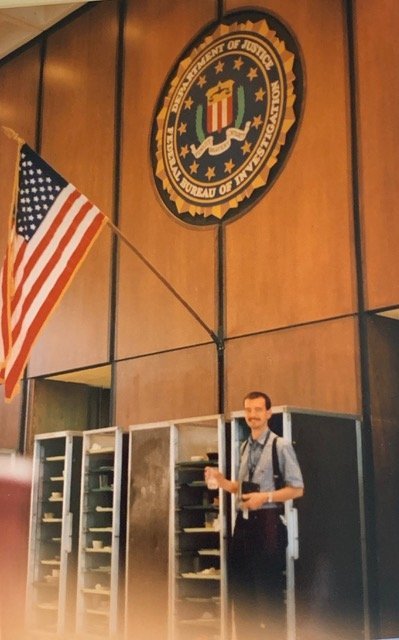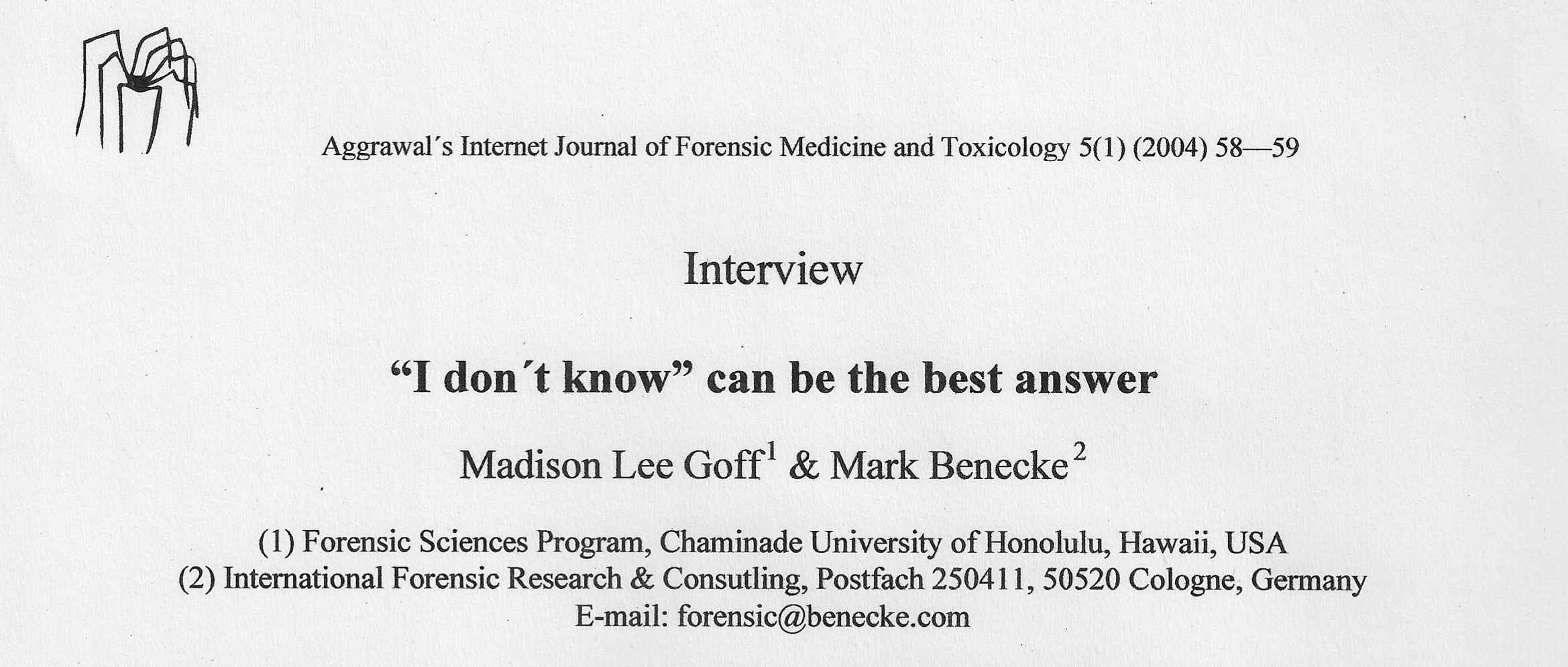Source: Quarterly Review of Biology 76:pp. 65-66
Review by Mark Benecke
"A Fly for the Prosecution. How insect evidence helps solve crimes". By M. Lee Goff. Harvard Universtiy Press, Cambridge, MA, and London, UK (2000). Drawings by Amy Bartlett Wright. ISBN 0-674-00220-2, vii + 225 pages; ill.; index; USD 22.95"
The more pressure is put on scientists to publish in scientific journals, or else to perish, the less likely it gets that an excellent popular science book like A Fly for the Prosecution is written. Being one of the old masters of forensic entomology -- that is, the science of determining post mortem intervals, and many other issues related to mostly violent death --, Lee Goff leads us through his exciting and at the same time entertaining world that strongly depends on silent crime scene assistants: maggots, adult flies and beetles, and once in a while a grasshopper, too. Many of these animals are attracted to decomposing body tissue. Their growth rate, and their succession are predictable, and can therfore be used to estimate the time when they started to feed on a corpse, or the time they got attracted to the body for other reasons like predating maggots, or building breeding chambers.
This allows a precise estimate of the time of death. In other situations, insect parts can be used as a criminalistic stain that liks a suspect to a crime scene. One of Goff's cases illustrates this -- the leg of a grasshopper found in a pant's cuff of a suspect had a fracture mark matching exacly a grasshopper body on a corpse. Goff, who is not only a charming writer but also a highly experienced scientist, gives many more case examples, mainly from Hawai'i where he is a professor for entomology, and a consultant to the Chief Medical Examiner. The book also covers his important work on the influence of contrasting habitats on the development of insects on corpses, and on the presence of toxins that can only be found in blowfly maggots after total decomposition of a body.
Forensic entomology is practized by only few people worldwide, and the scientific work that has to be performed before casework can be solved, and successfully used in trials, is immense. A Special Issue of Forensic Science International on this topic covers the current state of the art, and the latest scientific results, including Goff's recent work.
How to get the above mentioned article:
→ For example here: http://www.medpilot.de/ (fast delivery)








